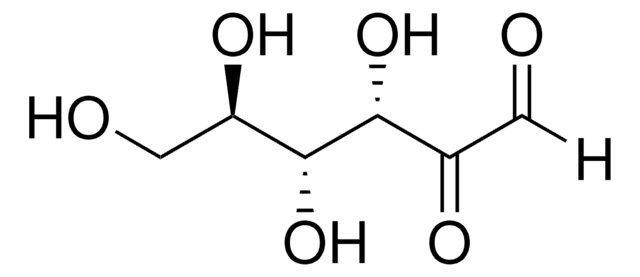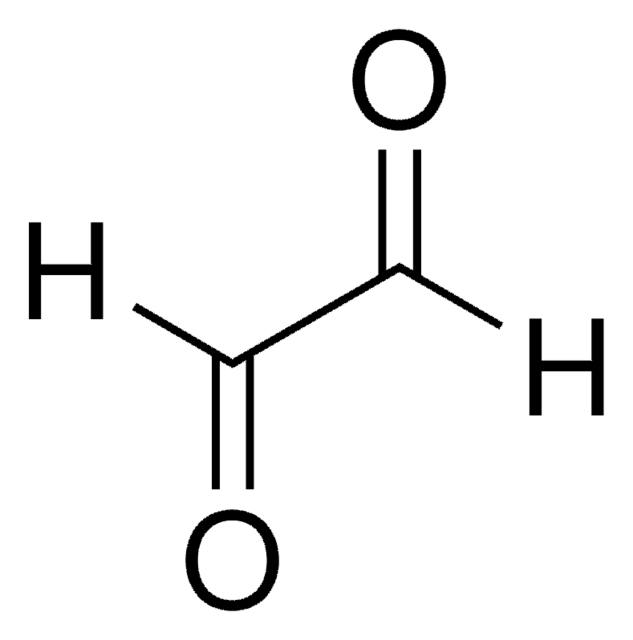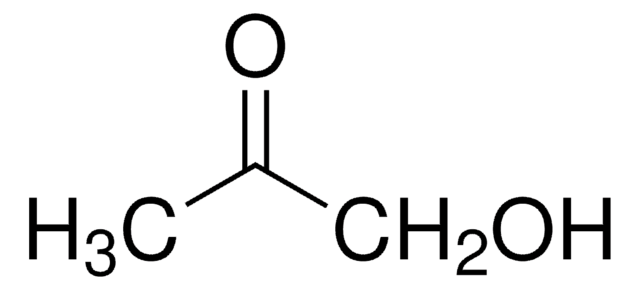75762
3-Deoxyglucosone
≥75% (TLC)
Sinônimo(s):
3-Deoxy-D-erythro-hexosulose
Faça loginpara ver os preços organizacionais e de contrato
About This Item
Produtos recomendados
Nível de qualidade
Ensaio
≥75% (TLC)
Formulário
solid
cor
faintly yellow to orange
temperatura de armazenamento
room temp
cadeia de caracteres SMILES
OC[C@H]1OC(O)C(=O)C[C@@H]1O
InChI
1S/C6H10O5/c7-2-5-3(8)1-4(9)6(10)11-5/h3,5-8,10H,1-2H2/t3-,5+,6?/m0/s1
chave InChI
UHPMJDGOAZMIID-OPAZFOKUSA-N
Aplicação
3-Deoxyglucosone is used as a reference for the analysis and detection of glucose degradation products, glycating agents, generated by processes such as heat sterilization.
Outras notas
To gain a comprehensive understanding of our extensive range of Monosaccharides for your research, we encourage you to visit our Carbohydrates Category page.
Código de classe de armazenamento
11 - Combustible Solids
Classe de risco de água (WGK)
WGK 3
Ponto de fulgor (°F)
Not applicable
Ponto de fulgor (°C)
Not applicable
Equipamento de proteção individual
Eyeshields, Gloves, type N95 (US)
Escolha uma das versões mais recentes:
Já possui este produto?
Encontre a documentação dos produtos que você adquiriu recentemente na biblioteca de documentos.
Os clientes também visualizaram
Michael Hellwig et al.
Journal of agricultural and food chemistry, 58(19), 10752-10760 (2010-09-09)
1,2-Dicarbonyl compounds are formed in food during Maillard and caramelization reactions. 3-Deoxy-D-threo-hexos-2-ulose (3-deoxygalactosone, 3-DGal) and galactosone, two 1,2-dicarbonyl compounds originating from the degradation of galactose, were synthesized and converted to the respective quinoxalines, which were characterized by NMR spectroscopy. Analytical
He Li et al.
Journal of agricultural and food chemistry, 67(32), 9050-9059 (2019-07-25)
The control of 2,3-dihydro-3,5-dihydroxy-6-methyl-4(H)-pyran-4-one (DDMP) formation in the Maillard reaction is important to improve the thermally treated food quality as a result of its intense bitterness and potential toxicity. In this work, phenolic acids, such as gallic, protocatechuic, caffeic, and
Danielle T Loughlin et al.
Wound repair and regeneration : official publication of the Wound Healing Society [and] the European Tissue Repair Society, 17(5), 739-749 (2009-09-23)
The interaction of fibroblasts with the extracellular matrix is critical for wound healing. Advanced glycation end products (AGEs) occur through nonenzymatic glycation of long-lived proteins such as collagens. One precursor to these modifications, 3-deoxyglucosone (3DG), is elevated in patients with
Alina Shapira et al.
Molecular nutrition & food research, 51(4), 473-478 (2007-03-29)
Peritoneal dialysis (PD) is commonly performed by using preprepared dialysis solutions containing glucose, which are thermally treated to achieve commercial sterilization. A series of glucose degradation products (GDPs) are being formed, which react with the tissue during the dialysis procedure
Martin Erixon et al.
Peritoneal dialysis international : journal of the International Society for Peritoneal Dialysis, 28(3), 277-282 (2008-05-14)
Glucose degradation products (GDPs) are important in the outcome of peritoneal dialysis (PD) treatment. 3,4-dideoxyglucosone-3-ene (3,4-DGE) is the most cytotoxic GDP found in conventionally manufactured fluids and may, in addition, be recruited from 3-deoxyglucosone (3-DG). It is not known what
Nossa equipe de cientistas tem experiência em todas as áreas de pesquisa, incluindo Life Sciences, ciência de materiais, síntese química, cromatografia, química analítica e muitas outras.
Entre em contato com a assistência técnica






